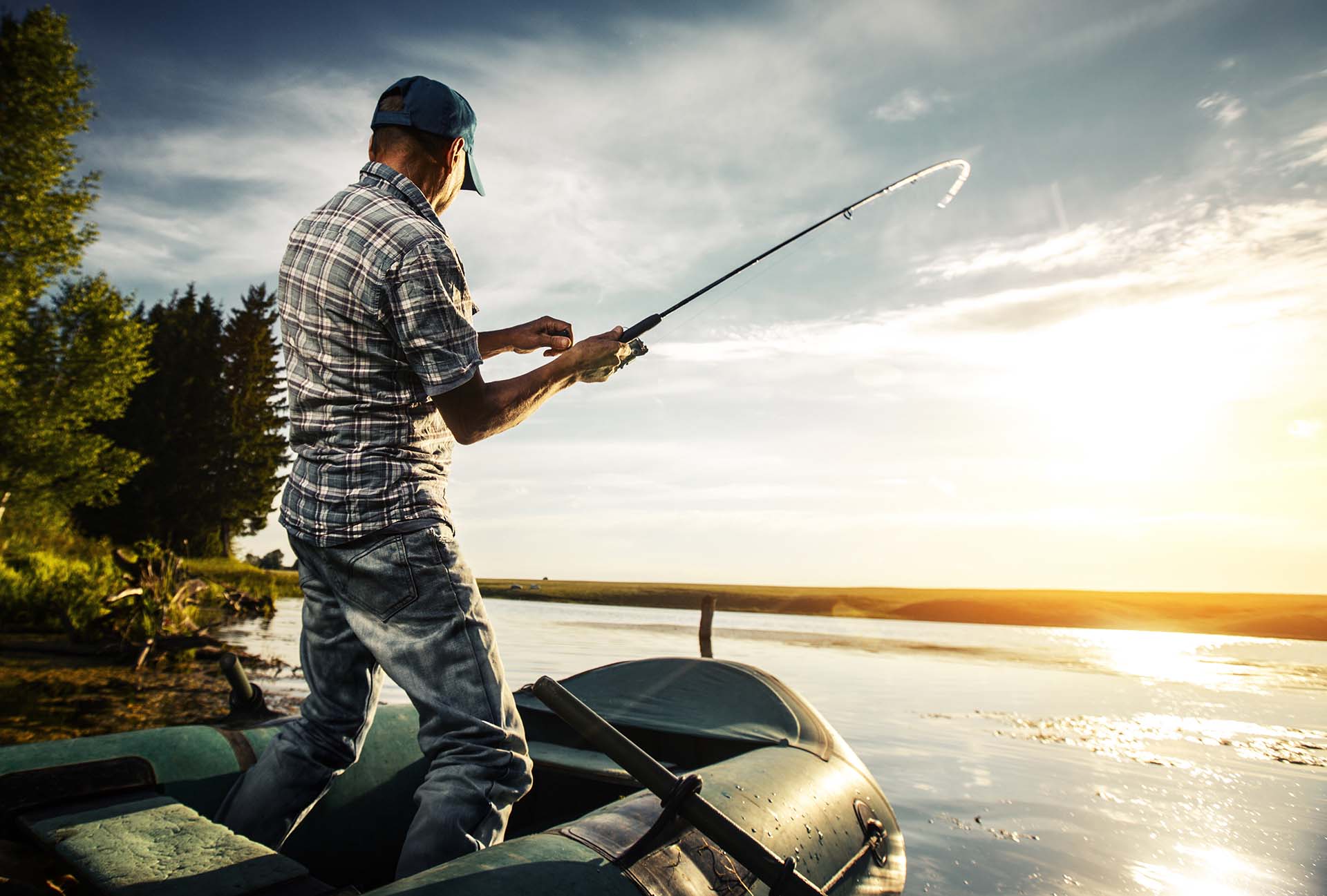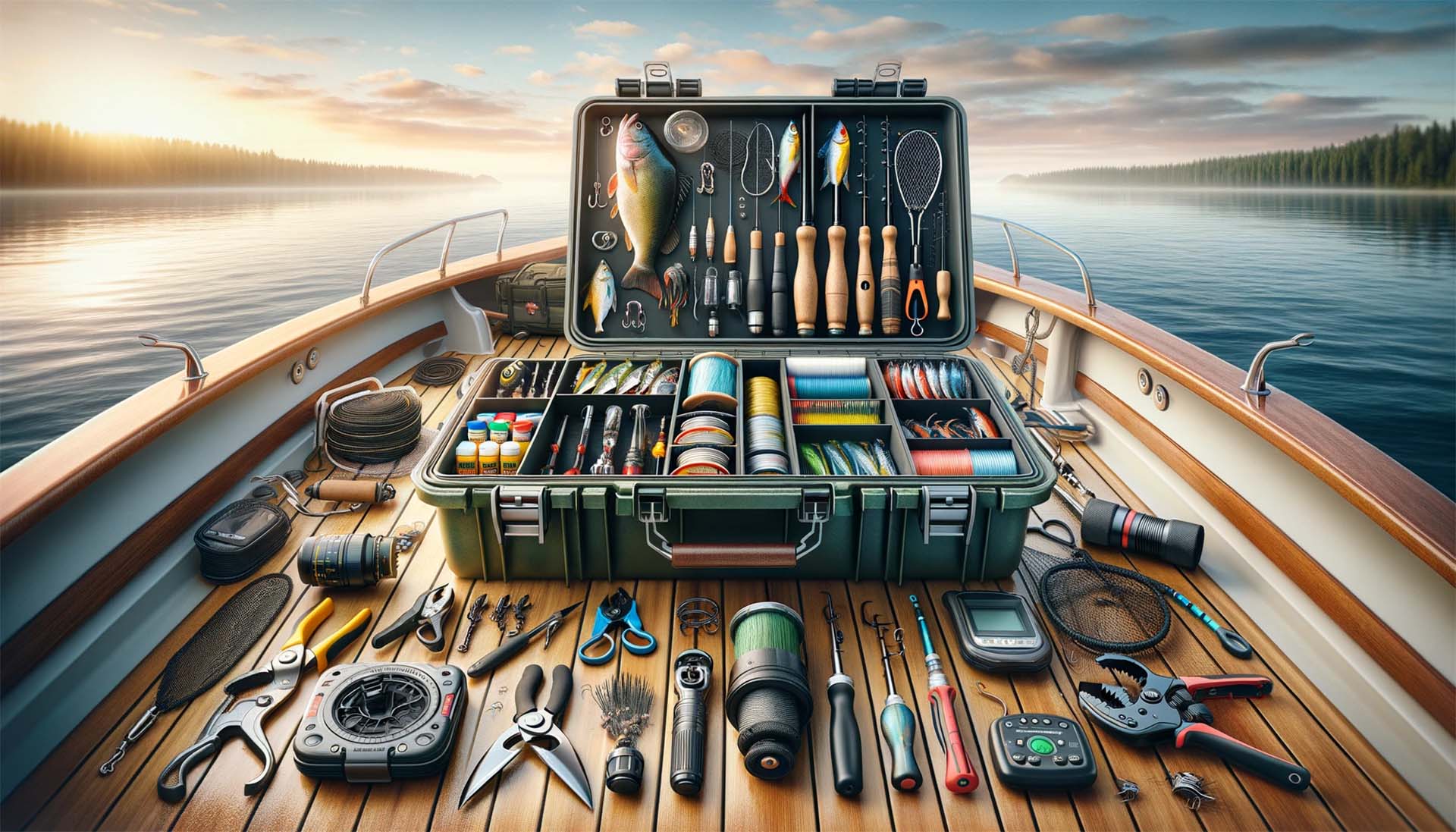Navigating the waters takes more than just good wind and a map. Knowing how to anchor your boat is an essential skill that sets the sea-savvy apart from mere deckhands. But without the right boat anchoring techniques, that secret spot could remain just out of reach, as elusive as the fish you’re trying to catch. Let’s dive into the nautical nuances, unraveling the ropes of this crucial skill with a splash of expertise.
Reeling in the Basics – How to Anchor Your Boat?
The anchoring spot should be approached slowly, facing into the wind or current. Lower the anchor from the bow, securely attach it to the rode, and let out the rode at roughly five times the water depth. Gently test the anchor’s hold by tugging on the rode. If secure, tie the rode to a bow cleat, adjusting the slack as needed. Briefly monitor your position to confirm stability. This method keeps your boat safely anchored, giving you peace of mind on the water.
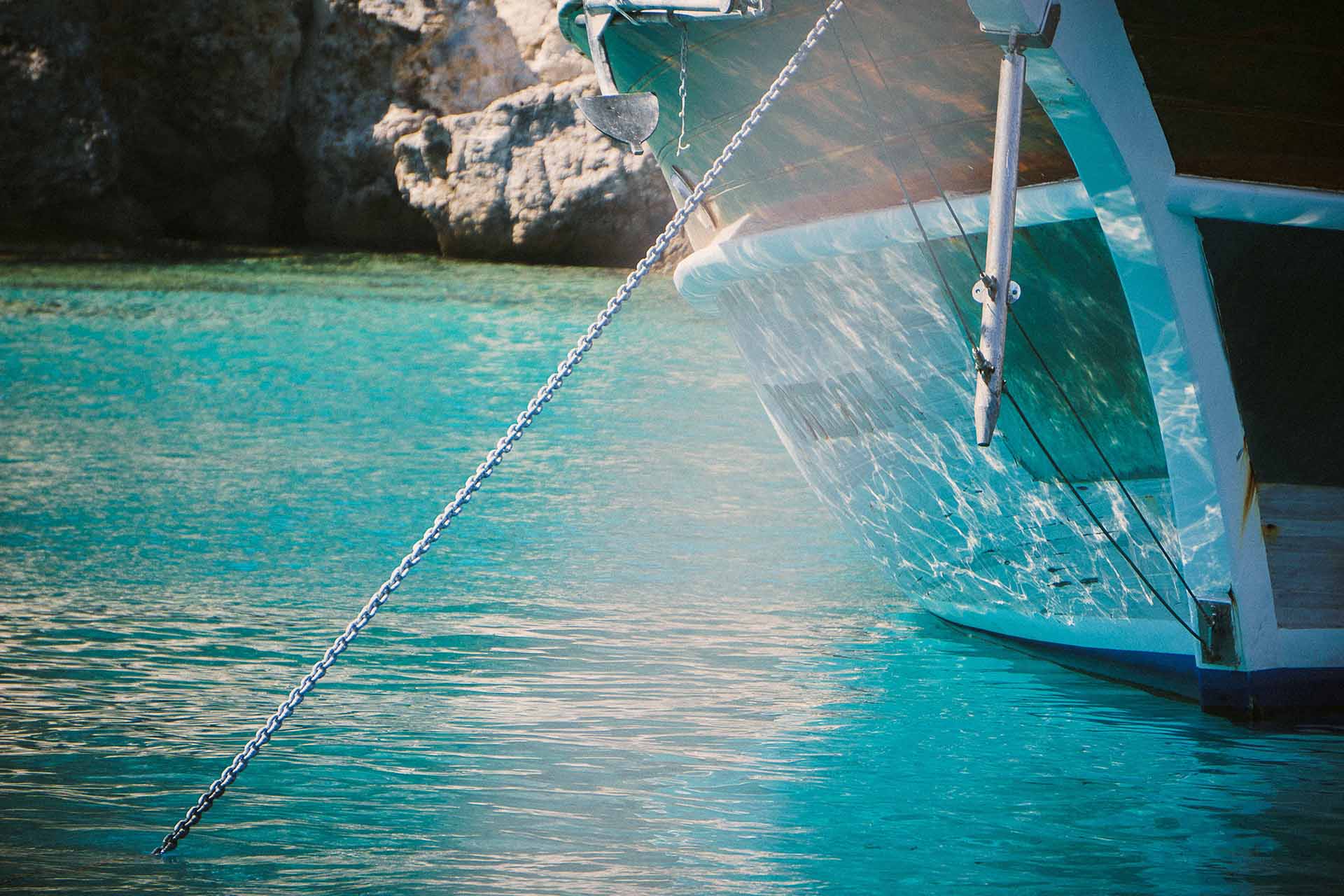
What Are the Most Commonly Used Anchor Types for Boats?
The sea is as varied as the vessels that sail upon it. Data from the International Chamber of Shipping indicates that over 50,000 ships are active in the world’s oceans. Just like the various types of fishing boats that dot the horizon, anchoring can’t be a one-size-fits-all approach. The diversity of water bodies and sailing conditions demands a tailored touch in both design and technique.
It’s obvious – anchoring in strong currents can’t possibly be the same as navigating the tranquil embrace of a secluded bay. Consequently, the design has evolved, leading to a variety of types, each with its own specialized purpose and approach. Let’s explore the most common types of these non-negotiable fishing boat accessories:
| Type | Boat Type | Good For | Bad For |
|---|---|---|---|
| Fluke | Small to medium boats | Sandy, muddy bottoms | Rocky, weedy, or very hard bottoms |
| Claw | Most types | Varied bottoms | Extremely harsh conditions |
| Delta/Plow | Cruises and larger boats | In most conditions, with a good reset | Compact or rocky bottoms |
| Mushroom | Small boats | Soft mud | Large boats and rocky seabeds |
| Shallow Water | Small boats | Shallow waters and quick stops for fishing | Deep water and overnight anchoring |
Navigating the Right Choice – How to Choose an Anchor for Your Boat?
When setting sail on the quest for the perfect match, the sea of options can seem as vast as the ocean itself. The key to navigating this choice lies in understanding your boat’s specific needs and the conditions you’ll most frequently encounter. This means you should consider your boat’s size and weight, the typical seabed textures of your favorite spots, and the usual weather conditions.
For small to medium recreational boats that frequent sandy or muddy bottoms, I personally recommend the Seachoice Utility Anchor. It offers an excellent balance of holding power and ease of handling, and its lightweight design makes it ideal for day trips and casual boating. On the other hand, if you’re looking for something sturdier and heavier, the Isure Marine Stainless Steel Delta Anchor is an excellent choice.
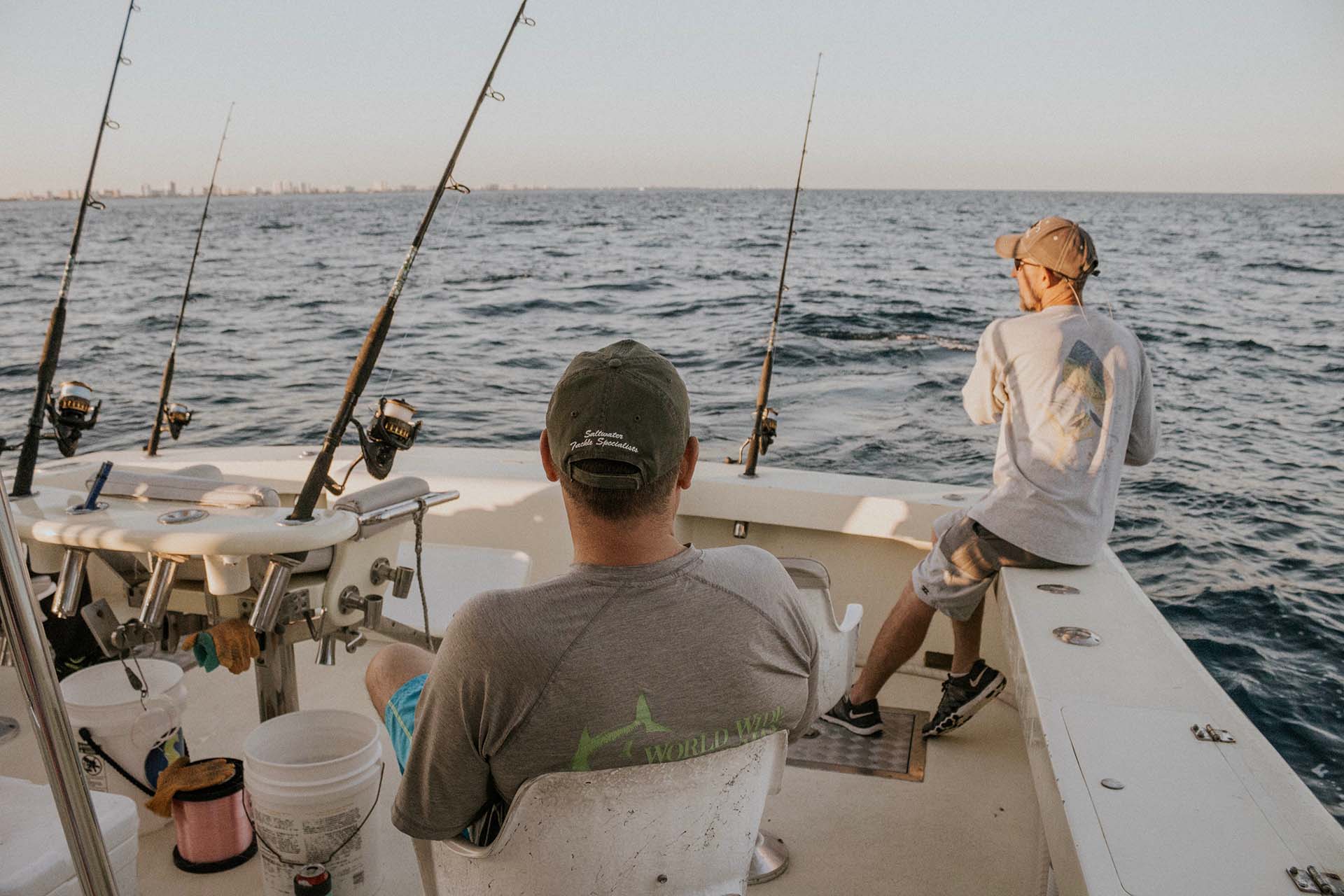
What Is the Proper Technique for Anchoring Your Boat?
Finally, let’s dive into the heart of the matter – the exact techniques behind anchoring your vessel. After all, it’s not just about throwing it overboard and hoping for the best – it’s an art and a science, combining precision, foresight, and a touch of nautical intuition. Here’s a step-by-step guide to safe boat anchoring:
- Prepare the anchor – before approaching your anchoring spot, ensure everything’s ready to be deployed, with the rope or chain properly secured to your vessel.
- Approach slowly – navigate your vessel to the intended spot at a slow pace, facing into the wind or current.
- Lower the anchor – gently lower it from the bow, not the stern, to avoid swamping or capsizing.
- Let out the line – pay out the line, rope, or chain as the vessel drifts back, using a ratio of at least 5:1 line length to water depth.
- Set the anchor – once enough line is out, gently pull on the anchor line to set it in the seabed, retrieve it, and try again if it doesn’t hold.
- Check the hold – after setting, monitor for a bit to ensure it’s holding firm, using landmarks or onboard GPS to check for movement.
- Secure the line – once satisfied, secure the line to a cleat on the bow.
Mooring vs. Anchoring – How to Make the Right Choice?
Mooring and anchoring both serve to keep your vessel in place, but they cater to different needs and environments. Mooring involves attaching your boat to a permanent structure, like a buoy or a dock, offering a secure hold in areas where it’s provided. Anchoring, on the other hand, gives you the freedom to choose your spot in the open water of the deep sea using gear carried on your vessel.
How to Anchor Your Paddle Boat Down by the Pond?
Anchoring a paddle boat near the shore of a calm pond requires a lightweight, simple method. Approach the area slowly, lower the anchor from the bow to avoid entanglement, and let out enough line for a secure hold. It’s a serene way to enjoy a stationary position on the water, perfect for landing some freshwater fish.
How to Anchor Your Boat up for Back Troll?
When anchoring your boat for back trolling, the goal is to maintain a controlled, slow movement against the current or wind. Use a heavy-duty anchor suited to the bottom composition, deploying it from the bow while carefully controlling the line to maintain the desired position and speed. This technique allows for precise fishing techniques, keeping your vessel steady in flowing water and enhancing your chances of a successful catch.

What Are the Ideal Conditions for Anchoring?
Obviously, the ideal conditions for anchoring present a calm sea, minimal current, and a seabed composed of sand or mud for easy penetration and a stronghold, minimizing the risk of drifting. Perfect weather, with little to no wind, further contributes to a stable and secure anchoring experience.
However, the essence of fishing on a boat isn’t about waiting for perfect conditions. Like most things in life, it’s about mastering the art of working with what you’ve got. Knowing how to choose the best anchor for different seabeds and the most efficient technique for various environments is the key to boat anchoring safety, regardless of the circumstances.
What Makes a Spot Perfect for Anchoring?
The perfect spot balances shelter from wind and waves with enough depth to allow for proper scope, yet not so deep as to require excessive lengths. As already mentioned, the seabed plays a crucial role here – sandy or muddy bottoms offer the best grip.
Moreover, the area should be free of underwater hazards and have enough space to account for a good swing radius without intruding on other vessels – it’s common anchoring etiquette. When targeting your favorite fish species, you need to also think about their habits. Here, areas near structures or transitions in depth make for ideal spots, ensuring both safety and success in your aquatic pursuits.
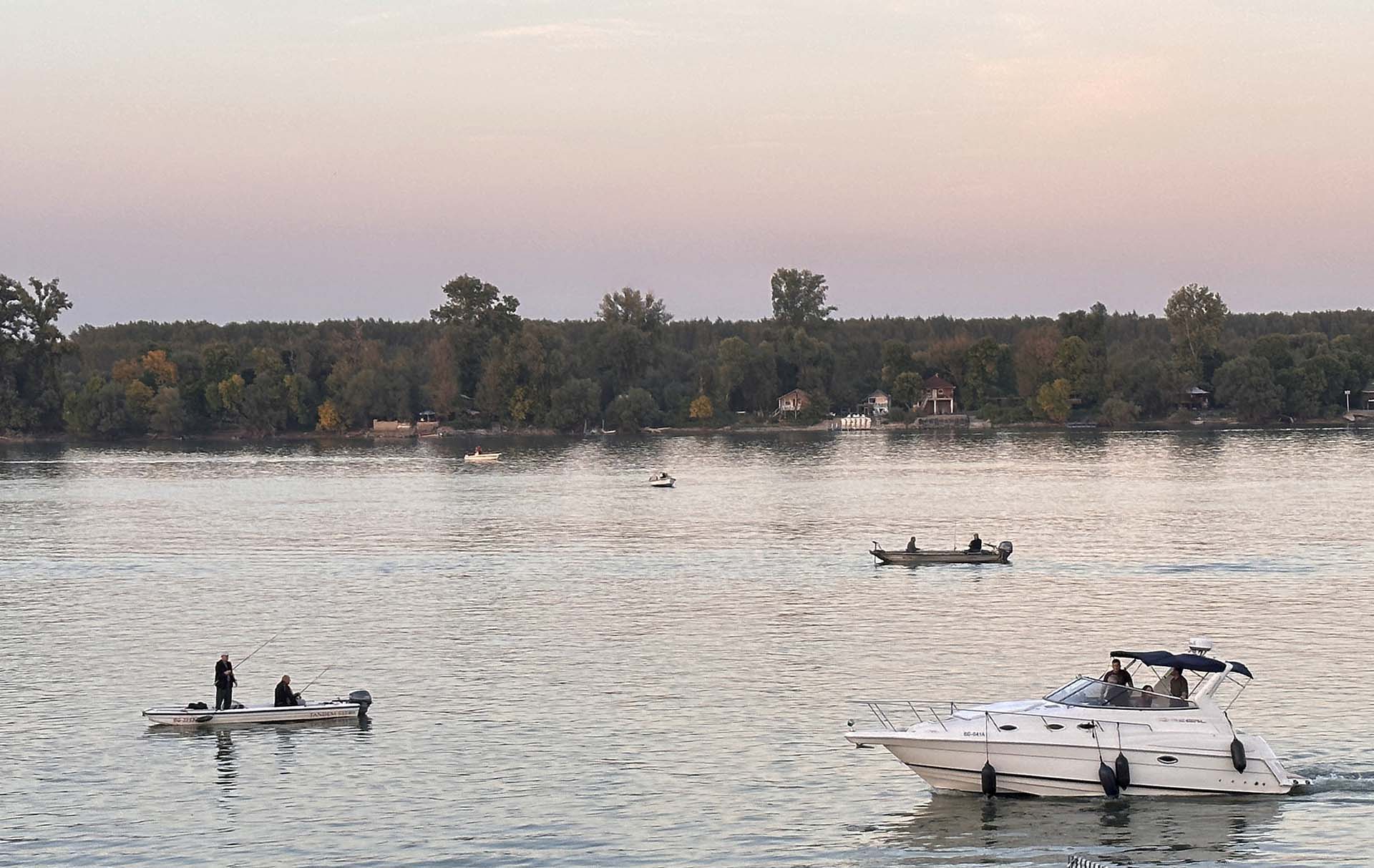
Steering Clear Of Classic Anchoring Faux Pas
Now that we’ve dipped our toes into the etiquette of the sea, it’s time to navigate through the choppy waters of common mistakes. From the seasoned sailor to the enthusiastic novice, everyone has a tale or two of anchoring gone awry. Here are some of such scenarios:
- Anchoring too close to other boats – always maintain a respectful distance, considering swing radius and changing conditions.
- Using insufficient rode – the depth of the water and current conditions dictate how much rode you need, but a general rule is 5-7 times the water depth.
- Neglecting to monitor conditions – regular checks ensure your setup holds and you’re not drifting into danger or onto other boats.
- Forgetting to mark your line – in crowded areas or poor visibility, marking your line prevents entanglements and helps others navigate safely around your boat.
- Rushing the process – take your time, as hasty anchoring leads to mistakes or, even worse, safety risks.
How To Maintain Anchors And Rodes For Ultimate Safety Out On The Water
Maintenance is crucial for ensuring everything remains reliable and ready when you need it the most. Regular inspections are crucial – look for signs of corrosion, wear, and damage, particularly in the moving parts and shank. It’s also wise to rinse everything with fresh water after each use, especially if you commonly sail in saltwater environments. In such scenarios, applying a protective lubricant to moving parts is also a great way to keep them functioning properly.
Rode maintenance, similarly, is essential for anchoring security. Start by examining the entire length of the rode for fraying, cuts, or abrasions, paying extra attention to the sections that come into frequent contact with the seabed. For chain rodes, look for rust or weak links. Also, make sure it’s dry before storing it away to prevent mildew and rot.
It’s Time To Sail Off And Master The Art Of Staying Put
As we reel in our anchoring adventure, remember that mastering this art is much like learning to dance with the waves – it takes practice, patience, and a pinch of persistence. Each attempt is a step closer to becoming the sea-savvy sailor you aspire to be. So, don’t be discouraged by a bit of drift or a snagged seabed. Embrace the learning curve, practice with purpose, and soon, you’ll find that staying put on the water becomes second nature.
Frequently Asked Questions
How Do I Know If My Anchor Is Properly Set?
You’ll know it’s properly set when, after letting out the appropriate amount of rode and gently pulling back on it, the boat stops moving and holds its position against the wind or current. It’s a good practice to monitor landmarks or use GPS to ensure there’s no drift.
Can I Anchor Anywhere, Or Are There Restrictions?
While anchoring is generally allowed, there are restrictions in certain areas to protect sensitive habitats, underwater cables, or busy navigation channels. Always check local regulations, maritime maps for designated no-anchor zones, and fishing licenses before setting off on your trip.
How Do I Retrieve A Stuck Anchor?
To retrieve a stuck anchor, try changing your boat’s position to alter the angle of pull on it. You can also use the boat’s motor to gently apply force in the opposite direction of the anchor’s set. If these methods fail, using a buoyed retrieval line as a last resort can help dislodge it by pulling from a different direction.

